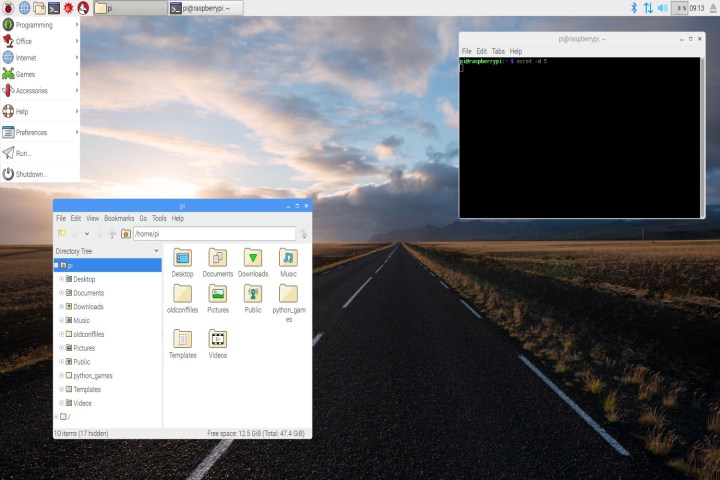
Upton warns that Pixel for Windows and MacOS is still in a prototype stage and that anyone wanting to use it should back up their data first before rebooting into the interface. He also warns that Pixel may cause minor issues on some hardware configurations, so don’t expect the perfect Pixel experience just yet. In fact, the Raspberry Pi team hasn’t decided to commit fully to Pixel for Windows and MacOS for “the long run” just yet, but when that happens, the outstanding problems will be addressed.
Pixel (Pi Improved Xwindows Environment, Lightweight) was created to provide a more visually pleasant computing experience for Raspbian and the Raspberry Pi board. It has a modernized look over the original Raspbian interface while throwing in high-resolution backgrounds, functional changes, and several new applications. What users won’t see in the new Pixel/Debian image for x86-based machines are pre-installed copies of Minecraft and Wolfram Mathematica.
This build of Pixel and Debian should work on any x86-based machine, as the combo is based on the i386 processor architecture, which is a rather ancient 32-bit technology introduced in 1985. Processors based on the i386 architecture have not been used in desktops and notebooks for decades, but i386 chips for embedded systems remained in production until around 2007. That said, users wanting to run the Pixel/Debian image on an x86-based device will need at least 512MB of system memory.
“Bringing Pixel to the PC and Mac keeps us honest,” Upton said. “We don’t just want to create the best desktop environment for the Raspberry Pi: we want to create the best desktop environment, period. We know we’re not there yet, but by running Pixel alongside Windows, Mac OS, and the established desktop GNU/Linux distros, we can more easily see where our weak points are, and work to fix them.”
Upton added that schools could benefit from using Pixel by running the image on PCs already installed in its classrooms. Students could then utilize the platform for their schoolwork and projects in class, and then shift over to their $35 Raspberry Pi running Pixel at home. The data can be easily transferred between home and school, and students won’t be required to learn two completely different operating systems.
Here is a general list of features Pixel adds to the original Raspbian environment:
- A new splash screen with a version number at the bottom-right corner
- High-resolution desktop wallpapers
- Updated icons on the taskbar, menu, and file manager
- An updated frame design for windows
- Improved font rendering
- A redesigned login screen
- Wireless power switching
- Updates to built-in applications
- Chromium for Raspberry Pi
- Integrated RealVNC server and viewer applications
- Integrated SenseHAT emulator
To download the new Pixel/Debian image (ISO), grab it here. It’s also made available on DVD in the latest issue of The MagPi magazine that will go on sale on Thursday. Instructions for installing and booting with Pixel on x86-machines can be found here.
Editors' Recommendations
- This custom hoverboard is entirely powered by Raspberry Pi
- How I repurposed an old Raspberry Pi into a travel router
- Arduino vs. Raspberry Pi
- You can now cram your Raspberry Pi 4 with 8GB of RAM for $75
- New Raspberry Pi camera module is the base for a DIY mirrorless camera

